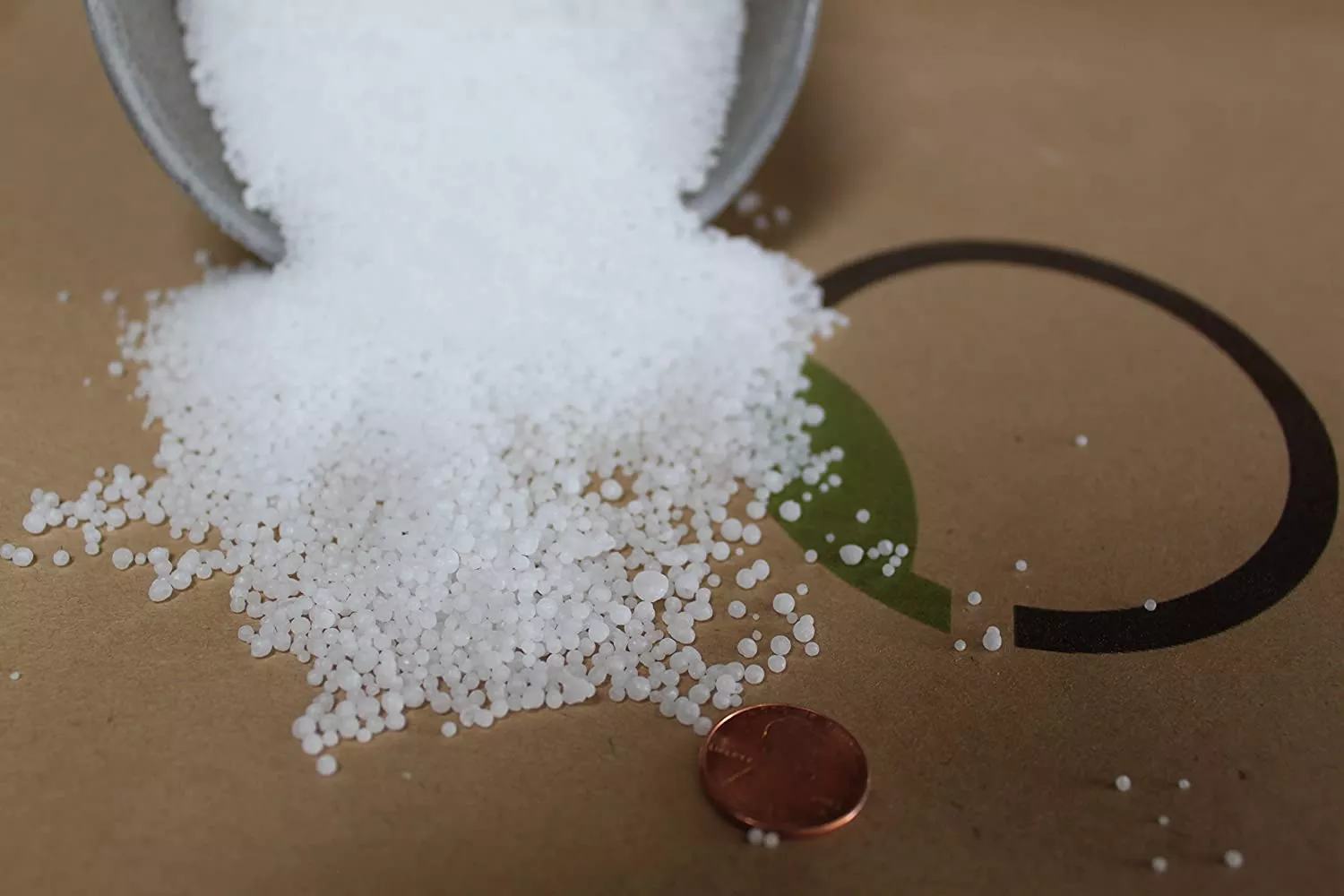Introduction
Liquid urea fertilizer is a major offering of modern agriculture that enables a world-proportionate way to increase crop yield. This modern fertilizer is composed of 85-90% nitrogen, one of the most vital elements in crop growing. It is praised by farmers all around the world for its ease of use. The direct spreading method guarantees the fertilizer’s quick absorption to plants.
Liquid urea fertilizer would become a critical part of sustainable agriculture It turns out that providing more nitrogen to crops greatly helps plant health and boosts crop yield. Helen Carter, the head of the Agricultural Research Institute says: ‘With timely application of liquid urea, the crop yield is also increased by up to 30% so it is becoming an essential constituent to meet the food requirement of any country.’
What’s more, urea fertilizers applied in liquid form can improve crop yields significantly by assisting in the even growth of plant life across an entire field. It is crucial for meeting the maximum output per acre and the financial viability of a farming operation. There aren’t only the current crop yields being boosted as a result, but the more efficient use of nitrogen sources ensures that the risk of contaminating the environment is reduced.
With integration of liquid urea fertilizer as nutrient source in crop management systems, crop production efficiency and sustainability can be improved substantially. This opening paragraph is an introduction to an in-depth investigation of liquid urea fertilizer and its usage to improve agricultural products.
Understanding Liquid Urea Fertilizer
Liquid urea based fertilizers contain a solution or suspension of the compound urea that has many uses and is widely produced. Urea can be used to fertilise a wide spectrum of rangelands and for crops for direct application. Urea, the main component of urine, is a nitrogen-rich chemical compound with the molecular structure CO(NH2)2. This structure provides for enhanced water solubility – which in the case of fertilizers leads to a nutrient that is readily available to plants allowing for rapid uptake and assimilation – which is critical during key plant growth stages.
Liquid urea means less waste – and with less run-off, it means healthier waters, too Liquid formulations, however, also provide a more precise method of application, reducing waste as the fertilizer is applied directly to the crop’s root zone. ‘Most plants use nitrogen at random levels and extremely limited amounts of additional nitrogen will pay significant dividends if higher yields are the objective,’ says John Peterson, a soil scientist at the Global Agriculture Solutions Firm. ‘This means that application, not merely the source of nitrogen, is a critical factor in optimising crop yields.
Precision in application is therefore critical to achieving best results.’ Peterson continued: ‘If the plants take up more of the nitrogen than is projected, then it will be in the residues left after the harvest. This can be excellent or productively worse. Productively worse if this excess nitrogen is leached into the soil water below the depth of the root zone and enters one of the many water tables throughout North America. This is actually often the case these days, but utra-precision application of liquid urea fertilizer dramatically improves this aspect of fertilizer use as well, making it win-win all around.
Although, liquid urea fertilizer has to be stored and handled in correct manner to maintain its quality. The urea fertilizer should be kept in cool and dry place and it should be out of the sun radiation as it degrades the urea content. Also, the tanks and sprayers are to be cleaned up and have to be checkup regularly for its clogging issue to be sprayed on plants in a uniform manner. Thus, liquid urea fertiliser has to store and handle in proper manner so as not to affect the quality and goodness.

Techniques for Applying Liquid Urea Fertilizer
But how to use liquid urea fertilizer most effectively given that, like many things, there are best practices for timing and delivery? When to apply liquid urea fertilizer? It matters. If applied too early or too late in the growing cycle, urea won’t achieve optimal results. Liquid urea fertilizer is best applied in periods of rapid plant growth, when crops will make the most of the nitrogen. ‘For most crops, it’s best to apply liquid urea fertiliser just before the plant enters the high-growth stages,’ says Emily Taylor, an agronomist specialising in nutrient management at the Eastern Agricultural Research Station.
The second practice, which I found just as interesting as the other label requirement, is soil testing before application of the liquid urea fertilizer. Testing helps determine the level of nutrients already present in the soil and the soil pH, which can affect the urea’s effectiveness. Knowing the composition of the soil can guide farmers to estimate how much (if any) fertilizer is needed, which can mitigate the risk of using excessive nutrients and over-fertilising the soil, thus reducing the risk of nitrogen runoff into waterways.
In addition, increasingly, liquid urea fertilizer is being combined with irrigation (this is called fertigation, which is the delivery of nutrients from an irrigation system directly to the roots of the plants that will use them). Fertigation has numerous benefits over broadcast, sideband or mid-row applications, since it delivers nutrients in exactly the right amounts and at the exact time that they are needed. It also minimises volatilisation and leaching losses. ‘Fertigation with liquid urea fertilizer increases nutrient use efficiency, saves water and reduces labour required for the separate application of fertilisers,’ said Dr Mark Roberts, an expert in precision agriculture.
With these strategies in hand – proper timing, soil testing and fertigation – farmers can make sure that liquid urea fertilizer will not be wasted, which results in healthier plants and higher production, all in a more sustainable way.
Maximizing Crop Yields with Liquid Urea Fertilizer
Applying liquid urea fertilizer strategically can produce significant increases in farm productivity. Sites scattered throughout the world are already demonstrating that liquid urea is helping crops achieve their high-yield potentials. Under diverse agricultural conditions, application of liquid urea boosted corn yields for corn farmers in the Midwest USA by up to 25 per cent when compared to common applications.
Liquid urea fertilizer works best in different conditions, including in arid climates and with plants that prefer wetter soils. ‘The water balance in the soil is really important for effective use of the fertilizer,’ says Dr Linda Greene, a plant physiologist at Cornell University in New York state. ‘In arid areas, the urea helps us maintain the balance.’ Greene notes that liquid urea also helps crops growing in clay-rich soils that bind nitrogen-rich nutrients, reducing plants’ ability to take these up.
Crop settings can be applied to liquid urea as changes in application rate, such as small and frequent application rates for young plants to protect them from nitrogen shock, and larger fertilisation rates for plants in flowering and fruiting stages. This strategy could optimise the application due to stages of plant growth and development, enhancing resource use efficiency and optimising nutrient supply for crops, while minimising the amount of fertilizer used.
These case studies provide the specificity, while the environmental synthetic perspective enables farmers to make the most of the liquid urea fertilizers and, at the same time, contribute towards sustainable farming practices through more highest possible yields as well as efficient use of nutrients and minimal creation of non-biodegradable waste matter.

Benefits of Using Liquid Urea Fertilizer
Besides the habitability of personal spaces, other reasons for its adoption include: increased uptake of nutrients by the plant. Because liquid urea fertilizer is applied directly to the soil or irrigation system, plants more easily take up the nitrogen content. According to Dr Sarah Johnson, an agricultural biochemist at the University of South Florida, Tampa: ‘Liquid formulations of urea allow for faster and more uniform root utilisation, which is crucial for rapid plant growth and development.’
Second, the use of liquid urea causes less N loss to the environment than do other N sources. The tendency of granular fertilizers to cause greater runoff and volatilisation risk is well-documented, leading to various environmental problems, from organic water pollution in the soil or in water bodies to harmful greenhouse gases. Since liquid urea spreads more evenly and gets more promptly absorbed by root systems, lower instances of runoff and volatilisation risk are often observed, thus minimising ecological disruption, and helping to meet increasingly restrictive regulatory standards.
As for the economics, it was (and is) affordable, and its precision application reduces waste, and the more efficient application results in plants that take up nutrients more effectively often leading to higher yields, and therefore a higher return on the investment in fertilizer. Dr Kevin Miles, an agricultural economist, explains: ‘The cost of not wasting as much fertilizer, along with achieving higher yields, made liquid urea an economically viable option for the modern farm.
Overall, we can justify the use of liquid urea fertilizer in our agriculture since it has numerous benefits, some of which we have discussed. These include faster and higher absorption of nutrient ensuring optimum uptake to plants when compare to solid manure/compost. In addition, it is safe to say that they are least pollutants to our environment for the fact that it does not discolour our water bodies nor does it alter their temperature compared to using solid manure/compost.
Moreover, liquid urea fertilizer is being used in our present day agriculture for reasons that truly lie in its benefits to agriculture to ensure food security, environment and the economy.
Conclusion
It can be concluded that liquid urea fertilizer will lead to the maximum output by using dorsal animal feed. In addition, the sustainability of manual and chemical agricultural activities can be greatly enhanced by liquid urea fertilizer. In modern day agricultural technology, this article has discussed the various ways that liquid urea fertilizer is applied and its advantages over traditional methods and the strategic supply of liquid urea fertiliser to modern agriculture, which helps improve the efficiency of nutrition use, reduce damage to the environment and save agricultural production costs. Liquid urea fertiliser is an essential tool for farmers to complete the dual tasks of ensuring output and environmental protection.
As we look to the future, greater adoption and optimization of liquid urea use will be crucial to improving food security worldwide. With technological developments in agriculture and increasing awareness of the environment, it is likely that liquid urea will become essential to efficient global farming strategies. Coordination between farmers, agronomists and researchers will be required to further refine urea use so that agriculture continues to meet our needs using available and sustainable resources.
Our research on the advantages and use of liquid urea fertilizer hopefully continues this discussion about the role that this fertilizer will play in transforming agricultural practices towards more resilient and productive farming systems.
Here are some scholarly articles on liquid urea fertilizer:
- Conjoint Application of Nano-Urea with Conventional Fertilizers: This article explores the integration of nano-urea with traditional fertilizers, discussing the potential for increased efficiency and reduced environmental impacts in sustainable crop production. It emphasizes the need for novel fertilizers that are energy efficient and environmentally sound. The research was supported by the Indian Farmers Fertilizer Cooperative Limited.
- Improving the Efficient Use of Urea-Containing Fertilizers: This study examines the chemical properties of urea and the effectiveness of modified urea fertilizers in enhancing nitrogen use efficiency (NUE). The review discusses the use of slow or controlled release fertilizers to reduce nitrogen losses, which can be significant with traditional urea applications.
- Urea as a Fertilizer: An analysis from historical field experiments comparing urea with other nitrogen fertilizers in terms of effectiveness and efficiency under different agricultural conditions. The article provides insights into the agronomic properties of urea and its role in plant nutrition.







